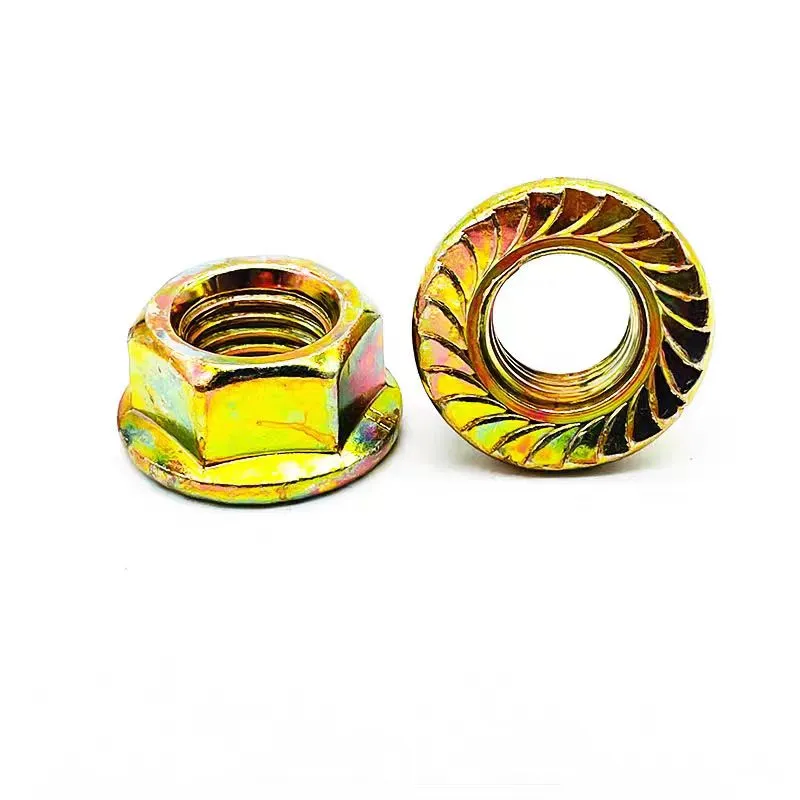

Self-Drilling Screws for Roofing Applications to Enhance Durability and Performance
Des . 11, 2024 00:35 Back to list
Self-Drilling Screws for Roofing Applications to Enhance Durability and Performance
Understanding Roof Self-Drilling Screws Applications, Benefits, and Installation
Roof self-drilling screws are a crucial component in the construction and roofing industry. These specialized fasteners are designed to simplify the process of attaching metal roofing sheets to various substrates, primarily steel or wood. As their name suggests, self-drilling screws come equipped with a drill point that negates the need for pre-drilling, making them an efficient choice for many contractors and DIY enthusiasts alike.
The Anatomy of a Self-Drilling Screw
At first glance, a self-drilling screw may seem similar to a conventional screw, but it possesses distinctive features that enhance its functionality. The most notable aspect is the drill point, which is engineered to penetrate the material without pre-drilling a pilot hole. This feature is critical for speeding up the installation process, especially when working with multiple sheets of roofing material.
In addition to the drill point, these screws often come with a hex head, which allows for a secure grip and easy installation using power tools. They are usually manufactured from high-strength materials, such as stainless steel or carbon steel, and are often coated with a corrosion-resistant finish to withstand harsh weather conditions.
Applications in Roofing
Self-drilling screws are predominantly used in metal roofing systems, making them an essential resource for various applications. Common uses include
1. Metal Roofing Installation One of the primary applications of self-drilling screws is affixing metal roofing panels to structural supports, such as purlins or rafters. Their ability to penetrate metal without pre-drilling saves time and labor costs.
2. Repair and Maintenance Roofing systems often require ongoing maintenance and repair. Self-drilling screws facilitate the quick replacement of damaged panels or other components, making maintenance more efficient.
3. Temporary Structures For temporary roofing solutions or installations that require easy disassembly, self-drilling screws offer a practical option. They can be easily removed and reused if necessary.
4. Residential and Commercial Buildings Self-drilling screws are widely used in both residential and commercial sectors for installing roofs, siding, and various other architectural elements.
Advantages of Using Self-Drilling Screws
The benefits of using self-drilling screws over traditional fasteners are numerous
roof self drilling screw

1. Time Efficiency The elimination of pre-drilling significantly speeds up the installation process, allowing for quick completion of roofing projects.
2. Cost-Effectiveness Faster installations lead to lower labor costs, making self-drilling screws a financially appealing option for contractors.
3. Variety of Sizes and Types Self-drilling screws come in various sizes and designs to accommodate different applications and materials, providing versatility for any project.
4. Strong and Reliable When properly installed, these screws provide a strong hold, ensuring that roofing panels remain securely in place, even during severe weather conditions.
5. Corrosion Resistance Many self-drilling screws are designed with protective coatings to prevent rust and corrosion, ensuring longevity and performance.
Installation Tips
While self-drilling screws are easy to use, ensuring proper installation is essential for achieving optimal performance.
1. Use the Right Tools Always employ a power drill or electric screwdriver equipped with the correct bit size for the screw head. This ensures a secure fit and prevents stripping.
2. Choose the Correct Screw Type Depending on the material being used and the conditions of the installation site, select the appropriate type of self-drilling screw designed for the specific task.
3. Follow Manufacturer Recommendations Adhere to the manufacturer's guidelines regarding spacing and number of screws required for maximum stability and coverage.
4. Avoid Over-Tightening While it may be tempting to tighten screws excessively, over-tightening can damage materials and lead to leaks. A snug fit is usually sufficient.
Conclusion
Roof self-drilling screws have revolutionized the roofing industry by providing a reliable, efficient, and cost-effective fastening solution. With their unique design and application versatility, they have become a preferred choice for both professional contractors and DIY enthusiasts. Whether you are engaged in new construction, repair, or maintenance, understanding the benefits and proper installation of self-drilling screws can greatly impact the success of your roofing project. Embrace the innovation of self-drilling screws and experience the ease they bring to your installations.
Latest news
-
Premium Self Tapping Metal Screws: Strong & Easy Install
NewsAug.02,2025
-
Premium Fasteners Manufacturer | AI-Driven Solutions
NewsAug.01,2025
-
Hot Dip Galvanized Bolts - Hebei Longze | High Strength, Corrosion Resistance
NewsAug.01,2025
-
High-Strength Hot Dip Galvanized Bolts - LongZe | Corrosion Resistance, Custom Sizes
NewsAug.01,2025
-
Best Self Tapping Screws for Drywall - Fast & Secure Installation
NewsJul.31,2025
-
High-Strength Hot Dip Galvanized Bolts-Hebei Longze|Corrosion Resistance&Customization
NewsJul.31,2025

